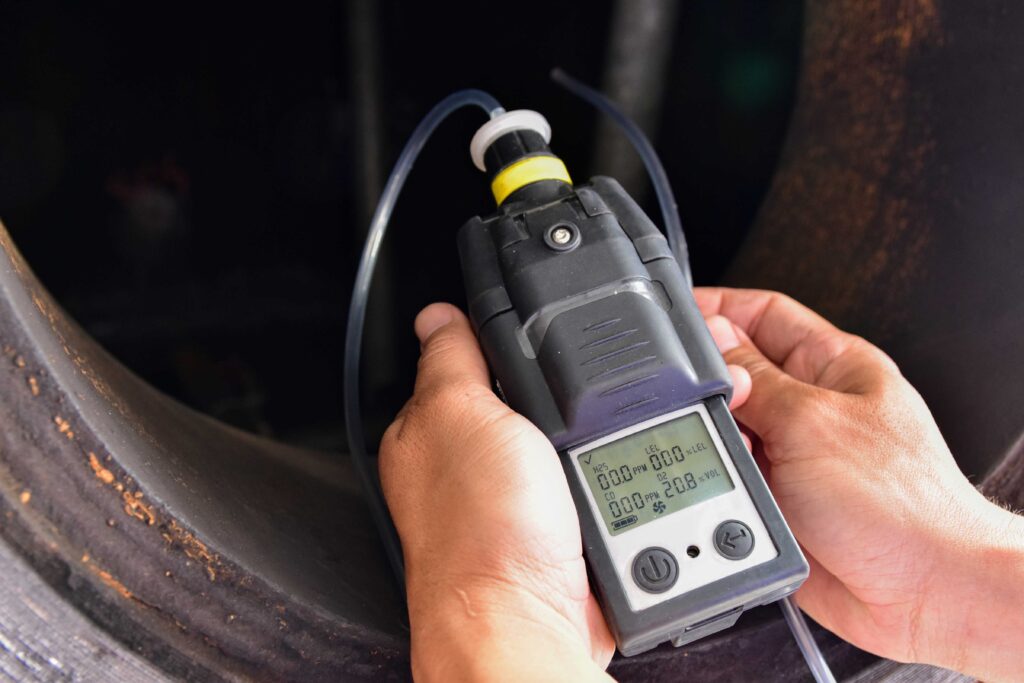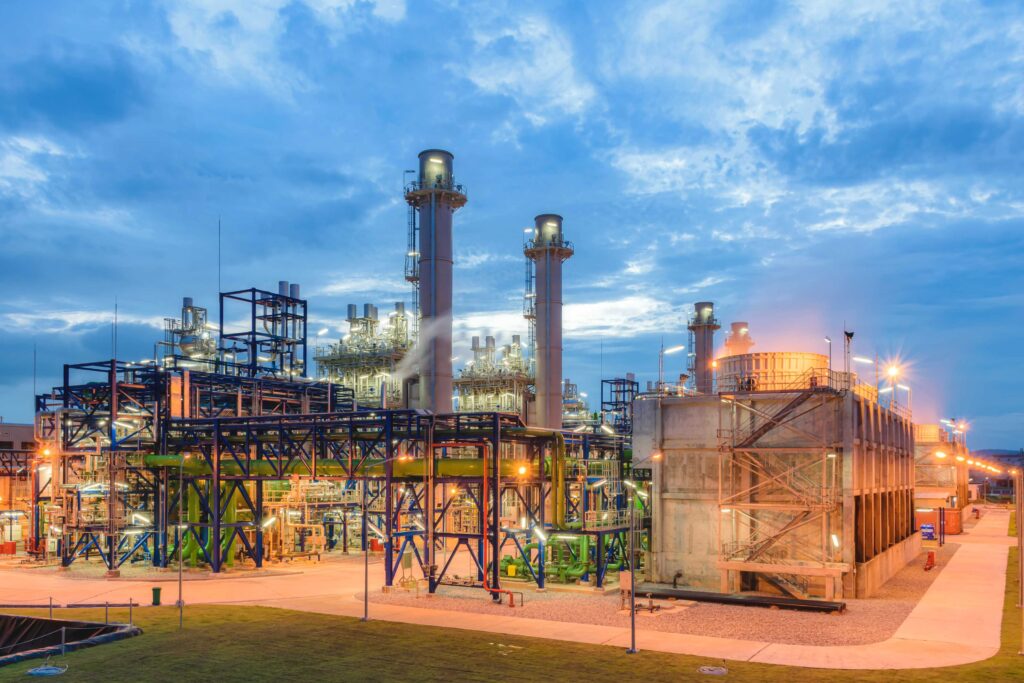Industrial work environments pose enormous challenges when it comes to ensuring a safe workplace. Gas hazards pose serious risks, often invisible and odorless, threatening workers’ health and lives. Understanding gas hazards in the workplace and taking proactive steps can prevent accidents, injuries, and fatalities. This blog explores common gas hazards, their dangers, and practical ways to mitigate them. What could your workplace do today to ensure employees breathe safely?
What Are Gas Hazards?
Gas hazards are harmful gases that can accumulate in workplaces, causing health issues, fires, or explosions. They arise from industrial processes, equipment, or environmental factors. The most common toxic gases include carbon monoxide (CO), hydrogen sulfide (H2S), ammonia, and methane. These gases can lead to poisoning, asphyxiation, or catastrophic accidents if not controlled.
Why Are Gas Hazards Dangerous?
Gas hazards in the workplace often go unnoticed until it’s too late. Many gases are colorless and odorless, making detection difficult without proper equipment. For example, carbon monoxide, a silent killer, causes over 400 deaths annually in the U.S., according to the CDC. Others, like hydrogen sulfide, have a distinct rotten egg smell but can paralyze the sense of smell at high concentrations and can quickly overcome an individual.

Common Gas Hazards in the Workplace
Here are the most common toxic gases and their risks:
- Carbon Monoxide (CO): A colorless, odorless gas produced by incomplete combustion. Common sources include vehicle exhausts, forklifts, generators, and poorly maintained furnaces. CO displaces oxygen in the blood, causing dizziness, confusion, nausea, and, in severe cases, death. The CDC reports over 400 CO-related deaths annually in the U.S.
- Hydrogen Sulfide (H2S): Found in oil and gas industries or sewage systems. At low concentrations, it irritates eyes and throats. At high levels (above 100 ppm), it paralyzes the sense of smell and causes respiratory failure or sudden collapse, known as “knockdown.”
- Ammonia: A pungent gas used in refrigeration systems, fertilizer production, and chemical manufacturing. It irritates eyes, skin, and lungs, causing burns or breathing difficulties. High exposure can lead to lung damage or blindness. Ammonia leaks are a growing concern in food processing plants.
- Methane: A highly flammable gas common in mining, landfills, and construction sites. Methane is odorless in its natural state, making detection challenging without equipment. It displaces oxygen, risking asphyxiation, and can ignite, causing explosions. The U.S. Mine Safety and Health Administration cites methane as a leading cause of mining accidents.
- Chlorine: A greenish-yellow gas used in water treatment, paper manufacturing, and chemical production. It irritates the respiratory system, causing coughing, chest pain, or pulmonary edema in severe cases. Even low exposure (10 ppm) can harm workers, per OSHA guidelines.
Each of these common gas hazards demands specific attention. Workers and employers must prioritize detection, training, and maintenance to prevent accidents. For instance, combining gas detectors with regular equipment checks can catch leaks early. In high-risk industries, like oil and gas or mining, strict adherence to safety protocols is non-negotiable. By addressing these gas hazards proactively, workplaces can protect employees and avoid costly incidents.
Real-World Examples of Gas Hazard Incidents
Example 1: Xuzhou Coal Mine Explosion (2005)
In China, a methane gas buildup in a coal mine sparked a deadly explosion. Over 170 workers lost their lives. Poor ventilation and inadequate gas monitoring contributed. This tragedy highlights the need for real-time gas detection systems in high-risk environments like mining.
Example 2: Texas Chemical Plant Leak (2019)
A hydrogen sulfide leak at a Texas chemical plant hospitalized several workers. The leak occurred during maintenance when a faulty valve released the gas. Workers lacked proper personal protective equipment (PPE). This incident underscores the importance of regular equipment checks and PPE training.
Example 3: Aghorn Station in Odessa Texas
Aghorn Operating Waterflood Station Incident (2019)
On October 26, 2019, a tragic hydrogen sulfide (H2S) accident occurred at an Aghorn Operating waterflood station in Odessa, Texas. Jacob Dean, a pumper, responded to an oil level alarm on a pump at the facility. While attempting to isolate the pump by closing two valves, he entered the pumphouse without a personal H2S monitoring device and failed to lock out the pump from its energy source. The pump automatically activated, releasing H2S-contaminated water into the confined, poorly ventilated space. The gas rapidly reached lethal levels, fatally injuring Dean. Later that evening, his wife, Natalee, concerned about his absence, entered the pumphouse and also succumbed to H2S exposure. Their two children, left in the vehicle, were unharmed. The U.S. Chemical Safety Board (CSB) investigation revealed critical failures, including a non-functioning H2S detection system, inadequate site security, and lack of proper training and PPE. In April 2025, Aghorn Operating was fined $1 million, and its vice president, Trent Day, received a five-month prison sentence for safety violations under the Clean Air Act and OSHA standards. This incident underscores the need for robust H2S monitoring, proper lockout procedures, and comprehensive safety training in the oil and gas industry.

How to Avoid Gas Hazards in the Workplace
Preventing gas hazards requires a proactive approach. Employers and workers must act decisively. Here are actionable strategies:
- Install Gas Detection Systems: Use fixed and portable gas detectors (aka gas monitors) to monitor for the most common toxic gases. For example, CO detectors in warehouses can alert workers to dangerous levels.
- Ensure Proper Ventilation: Maintain robust ventilation systems in confined spaces like storage rooms or tunnels. Regular maintenance prevents gas buildup.
- Provide PPE: Equip workers with respirators and gas masks in high-risk areas. Train them on correct usage.
- Conduct Regular Training: Educate employees on recognizing gas hazards. Run drills for emergency evacuations.
- Perform Equipment Maintenance: Inspect and maintain machinery to prevent leaks. For instance, check valves and seals in chemical plants regularly.
- Implement Emergency Plans: Develop clear protocols for gas leaks. Include evacuation routes and first-aid measures.
- Monitor Confined Spaces: Test air quality before entering confined spaces like tanks or sewers. Use permit-to-work systems to ensure safety.
These steps save lives. Consistent execution is key.
The Role of Worker Awareness
Workers must stay vigilant. Recognizing early symptoms of gas exposure—dizziness, nausea, or shortness of breath—can prevent disasters. Reporting unusual smells or equipment issues immediately is crucial. For example, a faint ammonia smell in a refrigeration unit could signal a leak. Quick action can stop a minor issue from becoming a major hazard.
Regulatory Compliance
Follow regulations like OSHA’s standards for hazardous gases. OSHA mandates exposure limits for gases like CO (50 ppm over 8 hours) and H2S (20 ppm ceiling). Conduct regular safety audits to ensure compliance. Non-compliance risks fines and, worse, worker safety.
How confident are you that your workplace’s gas detection systems could prevent a silent killer like carbon monoxide from going unnoticed?
FAQs:
Key Takeaways
- Act Proactively: Install gas detectors and maintain ventilation to catch common gas hazards early.
- Train and Equip: Educate workers on gas risks and provide proper PPE to minimize exposure.
- Learn from Incidents: Real-world accidents, like the Xuzhou mine explosion, show the devastating consequences of neglecting gas hazards.
By prioritizing detection, training, and maintenance, workplaces can protect employees from the invisible threat of gas hazards. Act today to ensure a safer tomorrow.








dctcasinologin
Dctcasinologin is one of my go-to spots. It’s not perfect, but it just feels right for some reason. Easy to login and get started! Here’s the link – dctcasinologin.
betbuslogin
Betbuslogin was a breeze! Quick and easy to sign in. The site itself is pretty functional too. Here’s the link: betbuslogin